With 32% of teams looking to invest in a video analysis tool, according to our 2020 Upside survey, video analysis systems (Second Spectrum, Hudl, Stats Perform, SkillCorner, Footovision..) have become one of the most common technologies used by pro teams today, along side of GPS, HR, AMS systems. Video analysis systems are often used for game analysis, scouting and even sports betting purposes. In this analysis we will discuss the current and future market trends, VC/M&A investment trends, the video analysis vendor ecosystems, and the key video analysis vendors. We will also provide recommendations to pro teams looking to adopt a video analysis solution.
What are video analysis systems?
Video analysis is the process of using any motion recording and gaining useful and actionable information from it. Video, simply a continuous sequence of images, is especially effective in enhancing technique to investigate problems with movement. Video analysis can help sport scientists, physiotherapists, sport coaches, team coaches, and the athletes themselves.
Video analysis tools are typically used by teams for various purposes: Game analysis, scouting. The simple review of recorded video, without doing actual analysis, can also help athletes with biofeedback, a technique to enhance motor learning. In some other occasions it can also be used by fans for sports betting purposes.
Picture: Footovision’s sports scouting solution
The term “video analysis” implies exactly what it sounds like—it’s analyzing video recordings. Video analysis is not motion capture. Motion capture uses attached markers on the body and infrared cameras to collect full motion in three dimensions. Many coaches consider motion capture as the gold standard, but multiple video cameras can get 3-D calculations, not direct capture, of motion if done in a research setting. Setting up multiple cameras in practice, training facilities, and competition doesn’t mean you can use them later to perform 3-D analysis. You need careful setup and calibration of the cameras, and this is typically beyond the scope of a coach, unless they decide to move away from the tricks of the trade and actually learn the trade itself.
it is also worth pointing out that some sports medicine executives use video analysis from games to create a possible injury mechanism, and this is called pathomechanics in some circles. A true definition is still up in the air at this point, but it’s accepted as the kinetic forces that adversely impair the structure and function of a joint or other part of the body. When an athlete is injured in a game where video is collected, some sports medicine professionals review the event and create a probable mechanism that caused the injury. While fatigue or poor training could be the root cause of the injury, the specific motion is to identify how an athlete is hurt. Whether an ACL tear in handball or a hamstring injury in rugby, video is a useful tool to see the precise period of when the event occurred and how it unfolded.
Popular features used by video analysis systems
Universal tools exist between several apps and high-level software packages. Almost all of the apps have the low-level tools, like frame-by-frame viewing or slow motion. Advanced features, such as the integration of external data feeds like HR, GPS, and force analysis, require a powerful software package. The more power and sophistication a user needs, the more cost and complications they will face.
Here are some popular features used by video analysis systems:
- Side-by-Side Viewing: Comparing technique, either from athlete to athlete or session to session of the same athlete, is the most common way to do analysis. Simple side-by-side comparison is a straightforward method of distinguishing similarities and differences between elite and sub-elite or an athlete developing ability over time.
- Overlay Feature: Showing the same athlete or different athletes at the same time is a great way to appreciate time and space. At times, overlaying an opaque or ghost view is useful to see changes in skill or technique as well. The Winter Olympics uses overlay views with skiers and the NFL uses overlay with the 40-yard dash.
Video: Dartfish
Picture: Second Spectrum
- Timers and Chronometers: Coaches use timers to address the gap between the way athletes use available space and their speed of movement. Performance analysis reporting involves full timelines or assessment of events from beginning to end. Timers can help dissect a sporting action or divide an event into splits or milestones.
Picture: Dartfish
- Measurement Tools: Distance with a known reference object on screen can provide excellent accuracy if the camera angle is square. While not a perfect solution, users can extract a solid accuracy from reference markers to try to estimate within reasonable distances. You can see an example of this with take-off distances in hurdles: the precise centimeter is not known, but a few centimeters of inaccuracy will be fine for most coaches.
Picture: Skillcorner
- Joint Angles: Joint angles, and sometimes release angles, are available within reason when you set up the camera at the right point of action. For example, a knee joint angle measure at the long jump board is possible if the camera is at the right distance and height. While the angle isn’t perfect, it’s strong enough to see trends. You can model release angles in the javelin—provided you know the athlete’s height and limb measures and the distance traveled—with a high degree of accuracy. Three-dimensional video with dual cameras provides stronger data quality, but controlling the precision of one or two degrees is beyond an athlete’s technique and more of a function of normal variability.
- Composite Picture Sequence Display: Stromotion, or similar tools, are popular because they create a photo sequence for easy evaluation of movement. Since video is a sequence of images, the composite picture is a favorite among coaches and they often use it as a visual explanation of sporting actions. Observation of a photo sequence is a timeless teaching tool for everyone, and the reason many products and packages include the feature.
Video: Stromotion, Dartfish
Not every app or software program will include the above features, but they are essential tools for professionals who want to extract more from their video recordings. Most of the performance analysis will use measurements that are actionable for coaching the next session or season.
Growing number of Video analysis vendors are targeting the sports betting market
A growing number of video analysis vendors are now targeting the sports betting market in order to drive their top line.
The reason? Simply because those vendors, teams and leagues are looking to tap in the fast growing sports betting market. Of note, the sports betting market was valued at $76.7B in 2021 and is expected to reach $83.6B by 2022, and $182.1B by 2030.
Picture: Footovision’s sports betting solution
32% of athletic trainers plan to invest in video analysis systems, according to the 2020 Upside Global survey.
As shown in the graph below, 32% of the athletic trainers we surveyed in 2020 are planning to invest in video analysis systems in the future. This compares to 48% of the athletic trainers looking to invest in sleep trackers in the future. 44% of them are also planning to invest in GPS systems and neurotech & mental health devices in the future. This does not come as a surprise as being in quarantine likely affected some players’ sleep and mental health and trainers want to make sure that they can address any mental issues moving forward.
Hydration/electrolyte monitoring solutions also gathered a lot of interest with 24% of the respondents indicating their plan to buy hydration/electrolyte monitoring solutions. Lastly, 16% of athletic trainers also indicated their plan to invest in connected fitness (Peloton, Tonal..) in the future.
Source: Upside 2020 Top Coaches Sports Tech Budget Survey Results, April 2020.
M&A likely to accelerate in the video analysis space
In the past few years we have seen a phenomenon of consolidation in the video analysis space. For example, back in 2017 Sports video analysis and statistics company Krossover got acquired by Dallas-based Blue Star Sports, a company linked to Dallas Cowboys owner Jerry Jones and focused on building sports management software. In 2021, Catapult Sports also bought SBG Sports Software, a company, which performs video and data analysis for sports teams. Catapult paid $40M for SBG Sports Software. Also in 2021, Optical tracking camera vendor Second Spectrum got acquired by Genius Sports, a leading betting data rights owner for major sports leagues, for $200M. We expect this phenomenon of consolidation to accelerate with some vendors shutting down or getting bought by some leading players in the space.
The video analysis market ecosystem: From computer vision systems to camera based video analysis companies:
The video analysis market is comprised of the following subsegments:
- Tracking through AI and computer vision vendors: Typically those include companies using computer vision systems to analyze videos. It includes vendors such as Footovision, SkillCorner, Sportlogiq, just to name a few.
- Optical tracking camera vendors: This category includes companies which provide Optical tracking cameras to teams to analysis videos, do game analysis and more. Key players in the space include companies like Second Spectrum, Stats Perform, TRACAB, Instat, Track160, BePro, or Metrica.
- Camera based tracking vendors: This category includes companies which provide camera based video solutions enabling teams to do game analysis. Key players in the space include companies like Pixellot, Spiideo, Panoris or Automatictv.
- Video tagging & telestration solution: This category includes companies which provide Video tagging & telestration solution. Key players in the space include companies like Hudl, Nacsport, Dartfish, Vision (Catapult).
Source: Upside global, Confidential 2022
Key video analysis vendors
A. Video tagging & Telestration solutions:
1.Hudl
Founded: 2006
HQ: Lincoln, NE (USA)
Amount money raised: $228.9M
Website: https://www.hudl.com
Investors: Hudl is funded by 6 investors. Bain Capital Tech Opportunities and Advantage Capital are the most recent investors.
Total employees: 3,200
Customers / partners: 200,000 teams across 40 sports. That includes 2600 Div 1 & professional teams.
Company/product description: Hudl is a platform and software that provides video analysis and coaching tools for sports teams. It enables coaches to upload footage of games, practices, and opponents, break the video down, add telestrations, voice clips, text feedback, and deliver the video and coaching notes to their athletes. It also allows athletes to build highlight reels and promote themselves to recruiters. It was founded in 2006 and headquartered in Lincoln, Nebraska.
2. Nacsport
Founded: 2008
HQ: Gran Canaria, Spain
Amount money raised: TBD
Website: www.nacsport.com
Total employees: 42
Customers / partners: Nacsport is a trusted video analysis solution for over 7000 coaches and teams worldwide. Top-flight teams such as Liverpool FC, Atletico Madrid, Leeds United, Sevilla FC, Villarreal, the Spanish National Basketball Association, Alba Berlin, Saski Baskonia, the Scottish Rugby Union, the Canadian Basketball Federation, and many more use Nacsport to meet their analytical needs.
Company/product description: Nacsport is the easy way for analysts, coaches and players to gain invaluable insight from matches and training sessions. With a comprehensive suite of intuitive video analysis tools for data collection, visualization and presentation, Nacsport allows teams to improve organically and exponentially.
With a range of five different programs, Nacsport makes video analysis accessible to all levels and budgets. As well as the main software suite, Nacsport also provides a range of complementary software. Tag&view, an app for iOS which allows for analysis on the go. Coach Station for sending live data and video to the bench. And Viewer, a read-only version of the software for efficient player review sessions.
Nacsport is also integrable with 3rd-party software such as KlipDraw, Sharimg and InStat Sport. With Nacsport, analysts, coaches, scouts and players can work faster, smarter and better.
3. Dartfish
Founded: 1999
HQ: Fribourg, Switzerland
Amount money raised: $3.5M
Website: https://www.dartfish.com
Investors: Information not public
Total employees: 50
Customers / partners: With more than 100,000 users worldwide, Dartfish customers are found amongst international and national federations, leagues and teams worldwide.
Company/product description: At Dartfish we believe that digital technologies can make athletes better, teams stronger, officials fairer and sport safer. For 20 years Dartfish has been developing the ultimate video analysis solution to empower users to create, enrich, analyze, publish and monetize video content. Dartfish tools include PC based video analysis tools, a web based sharing platform as well as a mobile app suite. These tools are used for Performance analysis, Video Replay as well as for Coach or Referee Education purposes. In the last years Dartfish has developed a computer vision system to facilitate and speed up the automated generation of data to enrich video.
4. Catapult (Vision)
Founded: 2006
HQ: Melbourne, Victoria, Australia
Amount money raised: N/A (Public company)
Website: https://www.catapultsports.com/
Investors: Catapult is funded by Aura Ventures. Catapult has acquired 4 organizations. Their most recent acquisition was SBG Sports Software on Jun 23, 2021.
Total employees: 474
Customers / partners: 2970 customers. Bayern Munich FC, LA Galaxy (MLS), Wales Rugby and NFL’s Steelers, amongst others, use Catapult.
Company/product description: Catapult is a sports performance analytics company, listed on the Australian Stock Exchange, that provides performance technology to 2970 teams, across 39 sports, in 137 countries. The company is headquartered in Melbourne, Australia.
There are three physical products: Catapult Vector, the ClearSky T6 and Optimeye S5. Each of these pieces of hardware is worn by athletes to help track different elements of their performances.
ClearSky is a local positioning system (LPS) Catapult developed in conjunction with the Commonwealth Scientific and Industrial Research Organization (CSIRO) that delivers accurate positional and inertial data in varying environments.
Catapult also developed a goalkeeper monitor, the G5, which quantifies the direction and intensity of dives, jumps, accelerations/decelerations, changes of direction, repeat high intensity efforts, and time to recovery.
Through its acquisition of GPSports, XOS Digital, PlayerTek, SportsMedElite and Baseline Athlete Management Systems Catapult also offers video technology and GPS systems for semi-professional sports teams and amateur football players.
A. Optical tracking camera vendors:
5.Second Spectrum:
Founded: 2013
HQ: Los Angeles, CA (USA)
Amount money raised: $20M (Acquired by Genius Sports)
Website: https://www.secondspectrum.com
Investors: Second Spectrum is funded by 6 investors. LionTree and August Capital are the most recent investors.
Total employees: 194
Customers / partners: NBA, MLS, Premier League clubs.
Company/product description: Second Spectrum develops a gaming machine learning software to revolutionize sports through AI. The software includes computer vision, big data, augmented, and virtual reality, as well as offers interaction, immersion, and personalization by providing applications, touchscreens, smart televisions, and AI technology, allowing fans and media companies to engage with the players and sports so that they can interact with each other. In 2021, Second Spectrum was acquired by Genius Sports, the official data, technology and broadcast partner that powers the global ecosystem connecting sports, betting and media.
6. Stats Perform:
Founded: 1981
HQ: Chicago, IL
Amount money raised: Vista Equity Partners acquired Stats Perform in 2014. Stats Perform has acquired 2 organizations. Their most recent acquisition was 13 Strides on Jul 28, 2021.
Website: https://www.statsperform.com
Investors: Vista Equity Partners
Total employees: 2,216
Customers / partners: 500 pro teams (PSG, Bayern Munich, Warriors/NBA, Patriots/NFL, Houston Astros/MLB, All Blacks, Orlando Magic/NBA, Laliga clubs, Series A clubs (Calcio), Ligue 1 clubs, etc.), ESPN, Google, Bet365, just to name a few.
Company/product description: Stats Perform became the market-leading sports technology company across media and tech, betting, and team performance by revolutionizing the richest sports data with unrivaled artificial intelligence. The company embraces and solves the dynamic nature of sport – be that for digital and broadcast media with differentiated storytelling, tech companies with reliable and fast data to power their own innovations, sportsbooks with in-play betting, or teams with first-of-its-kind AI analysis software.
7.Tracab:
Company: TRACAB (owned by ChyronHego).
Founded: 2003
HQ: Stockholm, Sweden
Amount money raised: n/a
Website: tracab.com
Investors: Privately held
Total employees: 70
Customers / partners: FIFA, UEFA, DFL, Bundesliga, Eredivisie, TUDN and numerous professional clubs around the world
Company/product description: TRACAB is a leading provider of cutting edge tracking data, providing some of the most accurate and lowest-latency data in sports. Trusted by many clubs and federations, TRACAB’s Gen-5 Optical Tracking system uses HD cameras and AI to provide real-time data and insight for analysts, coaches and media. TRACAB also produces the dedicated video telestration and analysis tool, Coach Paint.
8.Instat:
Founded: 2007
HQ: Dun Laoghaire, Dublin
Amount money raised: TBD
Website: https://instatsport.com
Investors: TBD
Total employees: 313
Customers / partners: Among our clients are over 1900 sports clubs, including the worldwide top teams like Barcelona, Real Madrid, Chelsea, Liverpool, Manchester City, and Bayern Munich. We also work tightly with Irish football clubs, e.g. Cork City and Limerick FC, as well as with the Republic of Ireland National Football Team.
Company/product description: InStat is a worldwide leader in sports performance analysis for professional leagues, clubs, players and media in football, futsal, basketball, and ice hockey.
The program of match episodes registration allows us to carry out serious analytical work in online mode. We know how to treat football statistics. Consultations of InStat Football specialists allow us to analyze deeper own team actions and to prepare more attentively for the next match. We collaborate not only with football clubs but also with mass media representatives promptly sharing the most interesting statistical information. We allow fans to follow matches online, using easy launch and the most up-to-date web application – match-center. A constantly growing database of players allows our clients to study football all over the world, staying in office. Their program InStat Scout is the handiest instrument for quick, serious and attentive scouting work. In several minutes the program allows to find and watch the video with the proper player which a scout is looking for.
9.Track160:
Founded: 2017
HQ: Habarzel 21, Tel Aviv, IL
Amount money raised: TBD
Website: https://www.track160.com
Investors: TBD
Total employees: 41
Customers / partners: Soccer clubs, academies, schools and universities
Company/product description: Track160 – elite-level performance analytics videos in a simple to use, affordable solution for all levels of the game. They believe that every soccer coach and player deserves to have access to the same high-quality data solutions currently available only to elite clubs. Track160 fuses cutting-edge video, analytics and automation technologies to enable community clubs to supply their players with FIFA-certified Performance Analytics Video experiences – To improve their game, benchmark their performance, and truly be seen.
Leveraging Computer Vision and proprietary Deep Learning techniques, Track160’s solution requires no initial expertise or complex installation. Using patented optical tracking technology that automatically identifies the location of multiple joints in a player’s body and tracks 3D pose and motion, Track160 does not only provide players and coaches with highly accurate data and videos, but is also setting the foundation for sport experiences in the metaverse.
10.BePro:
Founded: 2015
HQ: North Marylebone (England)
Amount money raised: $10M
Website: https://www.bepro11.com
Investors: TBD
Total employees: 78
Customers / partners: 2380 teams, including Series A clubs (AC Milan, Bologna FC..), Premier League clubs (Watford, Crystal Palace FC, West Ham FC..)
Company/product description: Bepro exists to help football clubs and players measure, understand and improve their performances. We’re an all-in-one solution, providing video, data and analysis tools. We provide event data, collected by a team of experts, and tracking data, collected through artificial intelligence. Everything is brought together in the Bepro11 analysis platform, which provides an easy to use, interactive means of manipulating and visualising data, with every event connected to video. We work with all levels in the professional and youth game and provide our services to over 700 teams worldwide. We believe all sides should be able to access high quality, usable tools that help them improve performances through video and data.
11.Metrica:
Founded: 2013
HQ: Amsterdam, Noord Holland
Amount money raised: Pre seed.
Website: https://metrica-sports.com
Investors: TBD
Total employees: 16
Customers / partners: 300 teams for 20k+ users (PSG/Ligue 1, AC Milan/Series A, Olympique de Marseille/Ligue 1, Federacion de Football de Chile, Sporting Portugal, Hajuk Split, etc.)
Company/product description: Metrica Sports developed innovative solutions that empower the constant evolution of the sport. Their core product is Metrica Play. It provides clubs with detection of key moments using pattern recognition technology. Metrica Play can plot and visualize the relevant information in a fast, flexible and easy way, which improves the interaction between coaches and players by showing them hard facts in a visual and intuitive way directly connected to the video. They are capitalizing on profound changes in AI technology and market adaptation to new insights, which collectively are driving a shift towards more flexible and universal analytical layers in Sports.
B. Tracking through AI and computer vision:
12. Footovision:
Founded: 2015
HQ: Paris (France)
Amount money raised: Confidential
Website: http://www.footovision.com
Investors: Internal investment
Total employees: +30
Customers / partners: Laliga, Ligue 1 (FC Nantes, Montpelier Herault SC, ESTAC, Toulouse FC, etc…), Leeds FC (Premier League), Norwegian Football Federation, FDJ, FIFA (EPTS certification).
Company background: Footovision provides advanced Artificial Intelligence data collection and data analytics solutions for football clubs, leagues, sports betting operators and media houses. FootoVision uses state of the art Artificial Intelligence and computer vision tools to collect tracking data, ball and non-ball event from any video or broadcast feed and provides an interactive and fully customizable key performance indicators and analytics dashboards. In 2021 Footovision becomes the first tracking solution from broadcastfeed to be certified by FIFA EPTS Quality Performance Program.
13. SkillCorner:
Founded: 2016
HQ: Paris (France)
Amount money raised: TBD
Website: https://www.skillcorner.com
Investors: business angels, Seventure Partners, 2024 Paris Olympics’ sponsor.
Total employees: 23
Customers / partners: MLS, LFP, Bundesliga, Ligue 1, Serie A, Liga NOS, just to name a few.
Company/product description: SkillCorner is the leading broadcast tracking data provider in the soccer market. They use powerful AI to give teams a competitive edge for player recruitment by accessing the most accurate broadcast tracking data and the most advanced integrated analytics on an ever-growing database. For the first time, teams can for example access simple to use and objective data on the physical profile of more than 30 000 players from more than 51 competitions globally (Men & Women). Following its success in soccer, SkillCorner is now expanding its services to other sports, focusing first on American Football with a product launch next season 22/23.
14.Sporlogiq:
Founded: 2015
HQ: Montreal, Quebec
Amount money raised: $5M
Website: https://www.sportlogiq.com
Investors: TBD
Total employees: 156
Customers / partners: TBD
Company/product description: Sportlogiq is an AI powered sports analytics company. We help teams win more games and broadcasters engage more viewers. Our advanced analytics software tracks the location and actions of every player on the ice, field, or court using standard game footage. Machine intelligence techniques are then used to extract meaningful insights from the data collected, allowing teams and fans to understand and experience the game in ways previously unimaginable.
C. Camera based tracking vendors:
15. Pixellot
Founded: 2013
HQ: Petach Tikva, NA
Amount money raised: $220M
Website: https://www.pixellot.tv
Investors: PSG, Shamrock Capital Advisors, Grupo Globo, Asahi Broadcasting Company, Firstime VC
Total employees: 270
Customers / partners: MLB, FloSports, SportsEngine, FC Barcelona, Real Madrid, Supersport, Liga MX, Hungarian Ice Hockey Federation, Stats Perform, ESPN, Hockey TV, just to name a few.
Company/product description: Pixellot’s automated sports production solutions revolutionize traditional video capture, production and distribution processes, enabling professional and amateur sports organizations to affordably cover and monetize their events. Pixellot’s technology streamlines the production workflow by deploying an unmanned multi-camera system in a single fixed rig (with additional angles as required), covering the entire field and delivering a stitched panoramic image.
Advanced auto-production mechanisms track the flow of play, identify highlights, collect data and insert advertisements without human intervention. Pixellot’s analytics and video editing platform Vidswap allows coaches to save time by breaking down games and get detailed game, team and players stats 4 hours after the game is over. Over 23,000 Pixellot systems have been sold to production companies, sports portals, sports federations, leagues, clubs, venues, and coaching solution providers around the world, including the US, China, Germany, Spain, Netherlands, France, UK, Japan, Singapore, Mexico, and other markets.
16. Spiideo
Founded: 2012
HQ: Malmö, Skane County
Amount money raised: Seed funding.
Website: https://www.spiideo.com
Investors: TBD
Customers / partners: Spiideo is trusted by thousands of clubs and leagues across the world, including Serie A, Bundesliga, Premier League, NWSL, MLS, USL and more.
Company/product description: A complete video solution for sports organizations to record, analyze and produce live streams. No camera operator required. Completely cloud-based.
17. Panoris
Founded: 2007
HQ: Brno, Jihomoravský
Amount money raised: TBD
Website: http://www.panoris.com
Investors: TBD
Total employees: 6
Customers / partners: Bundesliga, Swiss Football Federation, Hungarian Football Federation, just to name a few.
Company/product description: Through state-of-the-art technology, they deliver automated solutions for sports video analysis. Their extensive research experience in such field led them to create their own product. Main features are automatic cameraman, video analysis and live broadcasting.
18. Automatictv
Founded: 2014
HQ: Barcelona (Spain)
Amount money raised: Private funding (TBD)
Website: https://automatic.tv
Investors: TBD
Total employees: 19
Customers / partners: All of Spanish Professional (Laliga) soccer clubs -1st and 2nd division, Ligue 1 clubs, Super Liga clubs, just to name a few.
Company/product description: It offers a video analysis tool for football professionals (coaches), installed in all stadiums of the Spanish Professional League -1st and 2nd division- since season 2009-2010. Now there is an international version ready for other leagues. It also offers a low cost fully automated multicamera production system for sports events, which does not need any camera operator nor director, because relies on AI software to follow the action, depending on the sport, and performs camera switches. It uses an end to end architecture based on industry standards, which allows to integrate with existing backends.
19.Mobii:
Founded: 2008
HQ: Cape Town, South Africa
Amount money raised: $1.6M
Website: http://mobii.com/
Investors: TBD
Total employees: 27
Customers / partners: MLR, Springboks, just to name a few.
Company/product description: Providing comprehensive solutions by combining hardware technology with a software platform transforming sports events into experiences by complimenting interaction at all levels of society: from community-driven events to high performance sports analysis, enabling coaches and team administrators to analyze, strategize and take teams to their peak, as well as engage richly with fans at venues and at home. Mobii offers complete race timing solutions, from small time trials to mass participant events. The Mobii Cloud online web portal and timing software allows you to manage your events and work collaboratively with your team. You can work both online and offline, with changes synced automatically when connection to the cloud is re-established.
Recommendations to teams and leagues looking to adopt a video analysis solution
Here are some recommendations for teams or leagues looking to adopt a video analysis solution:
- Ask yourself some key questions and assess your ideal game style: Teams need to ask themselves some key questions (Goals, requirements in terms of quality/accuracy, annual budget) before adopting a video analysis solution. Teams needs to carefully evaluate the various type of solutions out there and understand the pros and cons of each system. This will help them pick the right solution (Tracking through AI and computer vision solution, Optical tracking camera system, Camera based tracking system, Video tagging & telestration solution) for them.
- Adopt a video analysis solution for player recruitment purposes that gives access to tactical video feeds from all leagues with consistent and reliable physical data (XY Tracking data): Charles Montmaneix, Co-Founder, COO & Director of Sales at SkillCorner, explains during an interview with The Upside that: “When talking to soccer clubs about their future needs for player recruitment they typically articulate 3 clear requirements: 1) Access to tactical (wide angle) video feeds from all leagues, 2) Access to consistent and reliable physical data on all players, 3) Access to XY tracking data (all players and ball) from all major professional leagues. Overall, the need for greater analytical depth and scale is clear to drive competitive advantage in player recruitment. The rise of cutting-edge technologies like broadcast tracking, which can help create a fully automated solution to provide XY tracking data at scale, plus a range of derived analytics has already started to penetrate the industry and I am confident that broadcast tracking is actually this technology shift soccer clubs were waiting for. Most importantly this technology should allow all clubs to recruit further afield, faster, cheaper and with more confidence.”
- Make sure to mix the video feeds with other data points to get a better picture of the athletes’ performance: As we mentioned earlier, it is critical for teams to mix their video feeds with various types of data (GPS, HR..) when possible. By doing so, it will give the coach a better sense of the health of his/her players’ health and performance.
- Adopt a video analysis solution that provides actionable insights and is fully customizable: Frank Gornés, CEO of Nacsport, explains during an interview with The Upside that: “A sports video analysis solution should provide real value to a team in terms of actionable insights. It must reveal weaknesses and strengths in both your own team and of the opposition, allowing you to adapt tactically to every game and win. Video analysis software should also be fully customizable and accessible to all”.
- Make sure to have staff members (e.g. video analyst) that can manage your HR systems on a daily basis: Teams also need to have a dedicated person (e.g. video analyst, etc.) on staff responsible for the video analysis system.
- Adopting video analysis solutions with great visuals in real time with easy to use tools is critical: James Kick, Head of Marketing at TRACAB, explains during an interview with The Upside that: “Video analysis plays a crucial role in the life of the modern-day coach. Presenting feedback in a visual way is usually the most effective for players and analysts alike. Time is often the enemy in professional sports environments, so having an ecosystem of highly accurate data, delivered in real-time and then simple-to-use tools that help coaches relay their messages quickly is vital”.
- Focus on video analysis vendors with great customer service: This is another key factor when buying a video analysis system. It is important for the team to adopt a video analysis system with great customer service. Some video analysis vendors provide staff members who can go on the customer’s site in order to assist teams with any problems. These are the type of video analysis vendors that teams need to work with when adopting a video analysis solution.
- Adopt a video solution that can help standardize your videos from the U10 to the pros: Gabby Barzilay, AVP Business Development and Coaching Solution at Pixellot, explains during an interview with The Upside that “Standardize your video everywhere – from the u10 to the pros. Every player should be filmed in the same way and consistently be able to watch himself, compare himself to previous practice sessions and improve. Every player and coach should be able to do this at any time, from anywhere, and on any platform. Watching and analyzing every practice is the best personal coach for the athlete and the best assistant coach for the manager. However, all the video needs to be filmed on one aggregated platform to improve workflows and consistency”.
- Focus on video analysis vendors with affordable pricing without long term contracts: Oftentimes we hear from teams that they are locked into long term contracts by some video analysis vendors. Therefore it is important for teams to look for video analysis vendors that offer pricing flexibility (1 year contract or monthly payment) as well as affordable pricing options based on the teams’ needs.
- Adopt a video analysis solution with a versatile video and performance analysis system, which provides practical and interactive customizable insights, is very important: Pierre Miralles, Co-Founder of Footovision, explains during an interview with The Upside that: “In today’s football industry evaluating the performance of one’s team through data analytics is an important facet for the organization and analysts. Thus, the demand for efficiently obtaining accurate and reliable technical and tactical data through video analysis is quickly rising. Having a versatile video and performance analysis system provides practical and interactive customizable insights. It also enables to generate detailed reports that assist coaching staff when structuring the team. This system provides reports on the fitness/physical state, tactical schemes, and even captures the different intensities each player demonstrates during a game. Furthermore, when scouting players, it gives users the ability to discover new talents to integrate into their team”.
- Focus on video vendors with value add services: As we mentioned before, working with a video analysis vendor that can offer other types of features that can be used for fast growing areas like sports betting.
Bottom line: Video analysis systems have become a critical part of teams’ scouting and game analysis. It has also become a key part of the broadcasting experience. Now teams and leagues can choose from a wild variety of video analysis vendors today. It is very important for those teams and leagues to carefully assess those video analysis vendors in terms of pricing, product quality, accuracy, customer support, and other factors. Moving forward we expect new emerging players to enter the market in order to disrupt the dominance of the incumbents. This will help fuel innovation in the video analysis market which will be a win win situation for the teams and vendors.

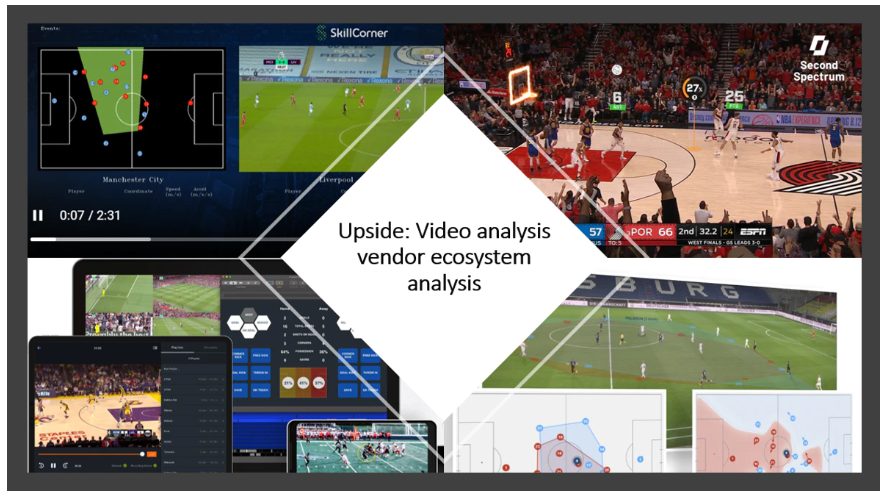
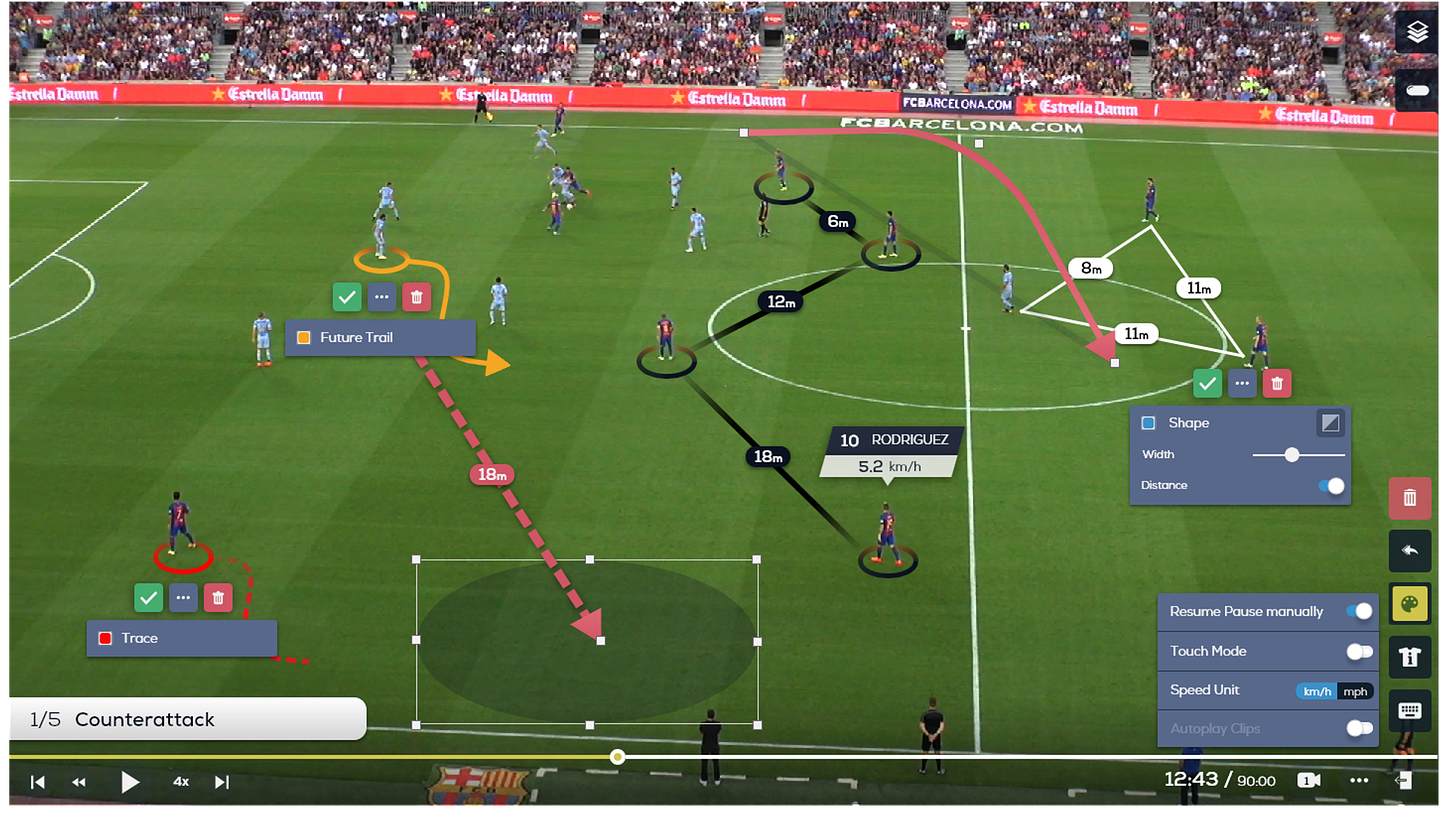

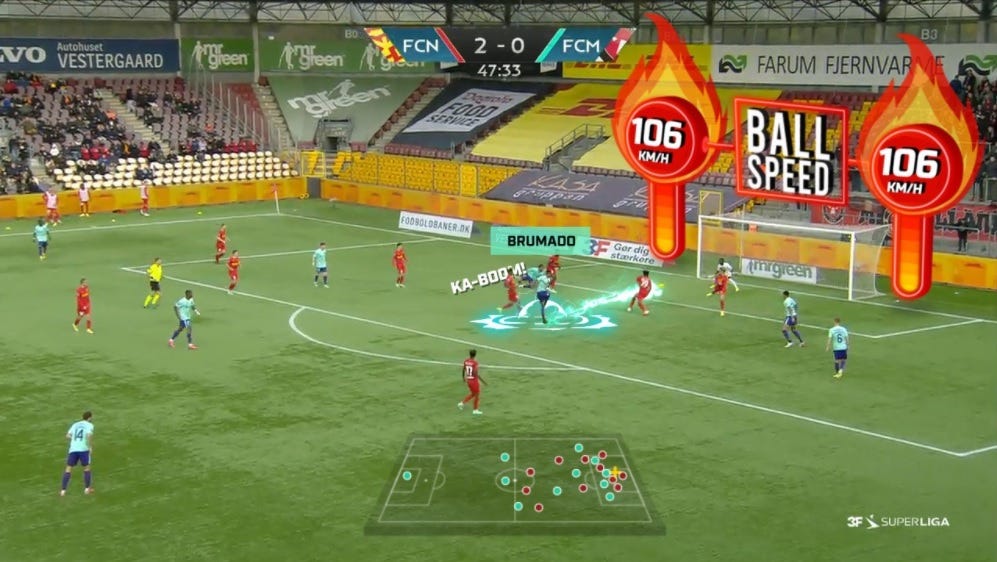
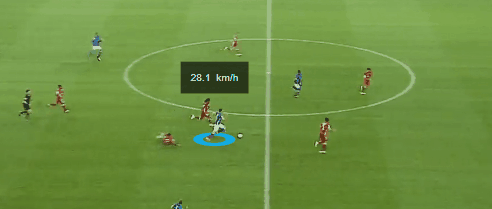


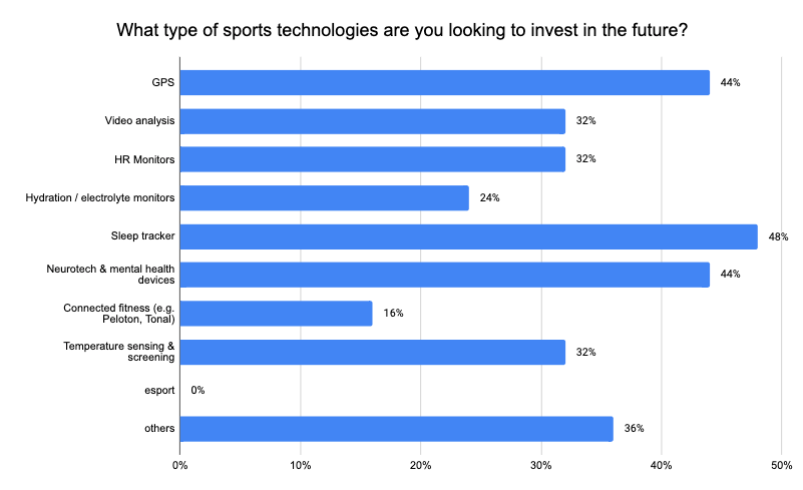
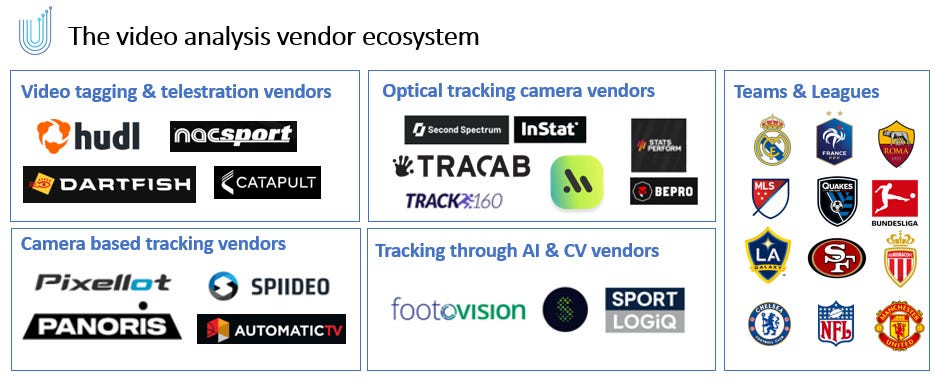





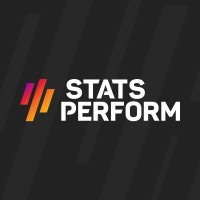







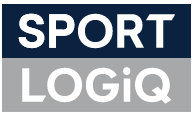




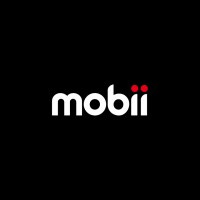
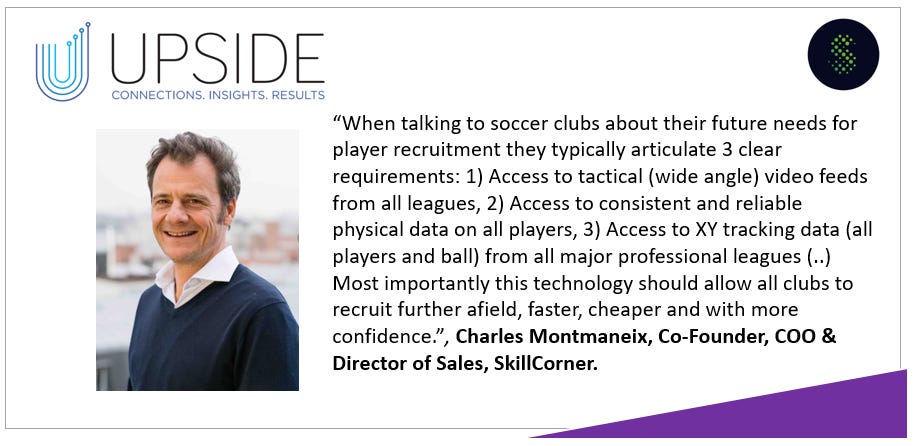

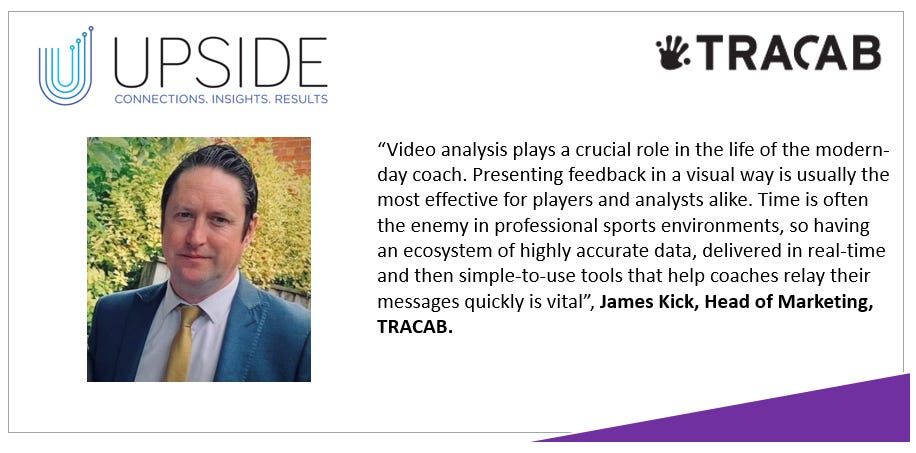
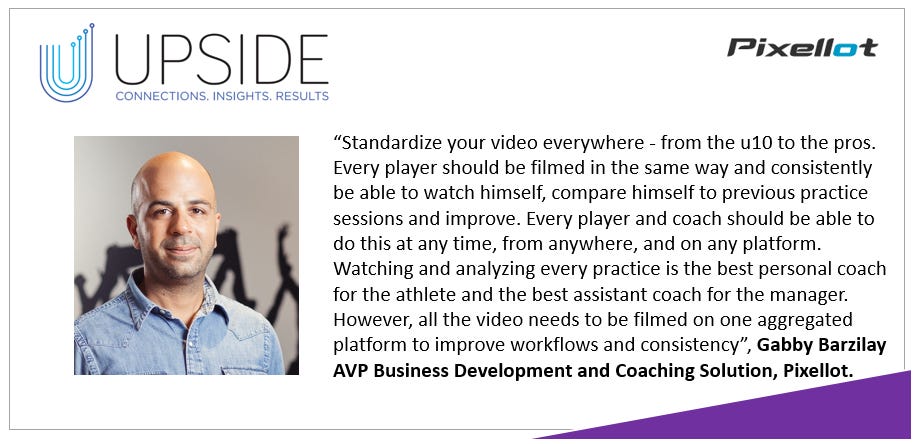


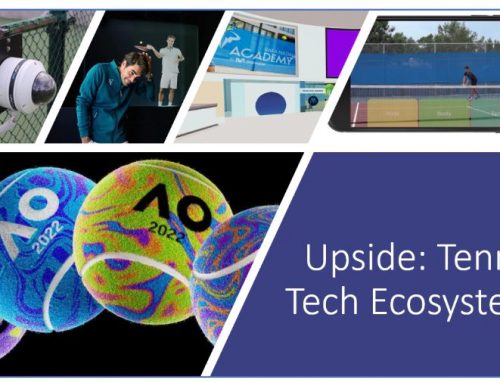

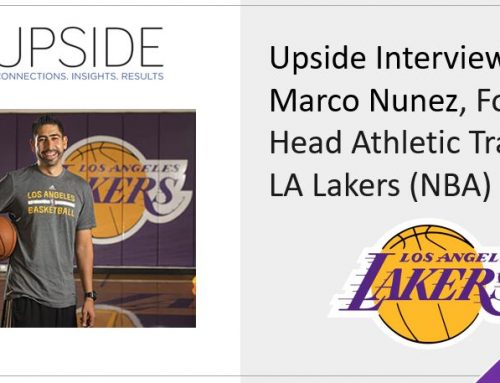
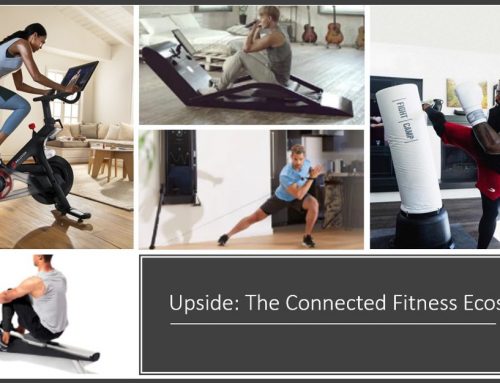
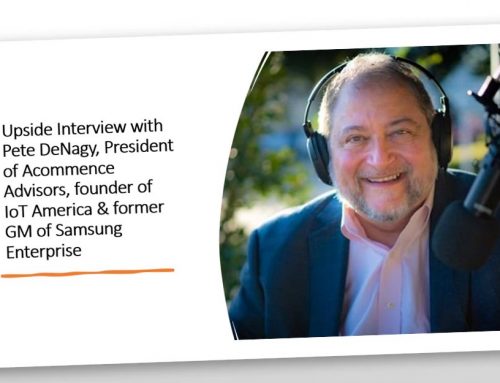
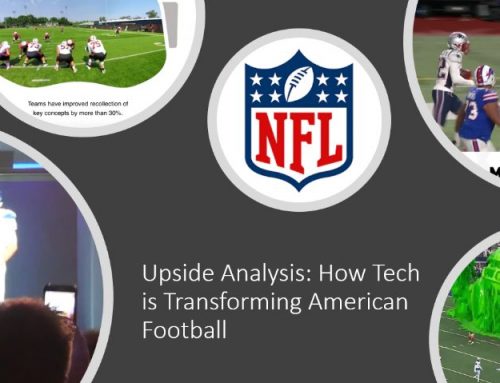
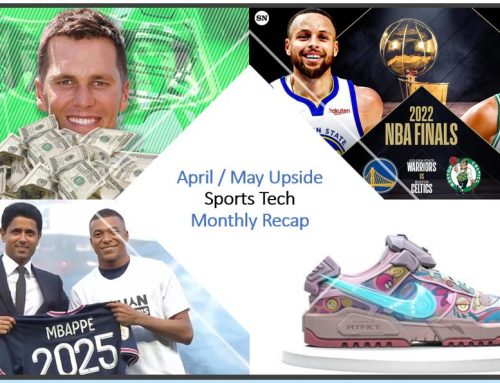

Leave A Comment
You must be logged in to post a comment.